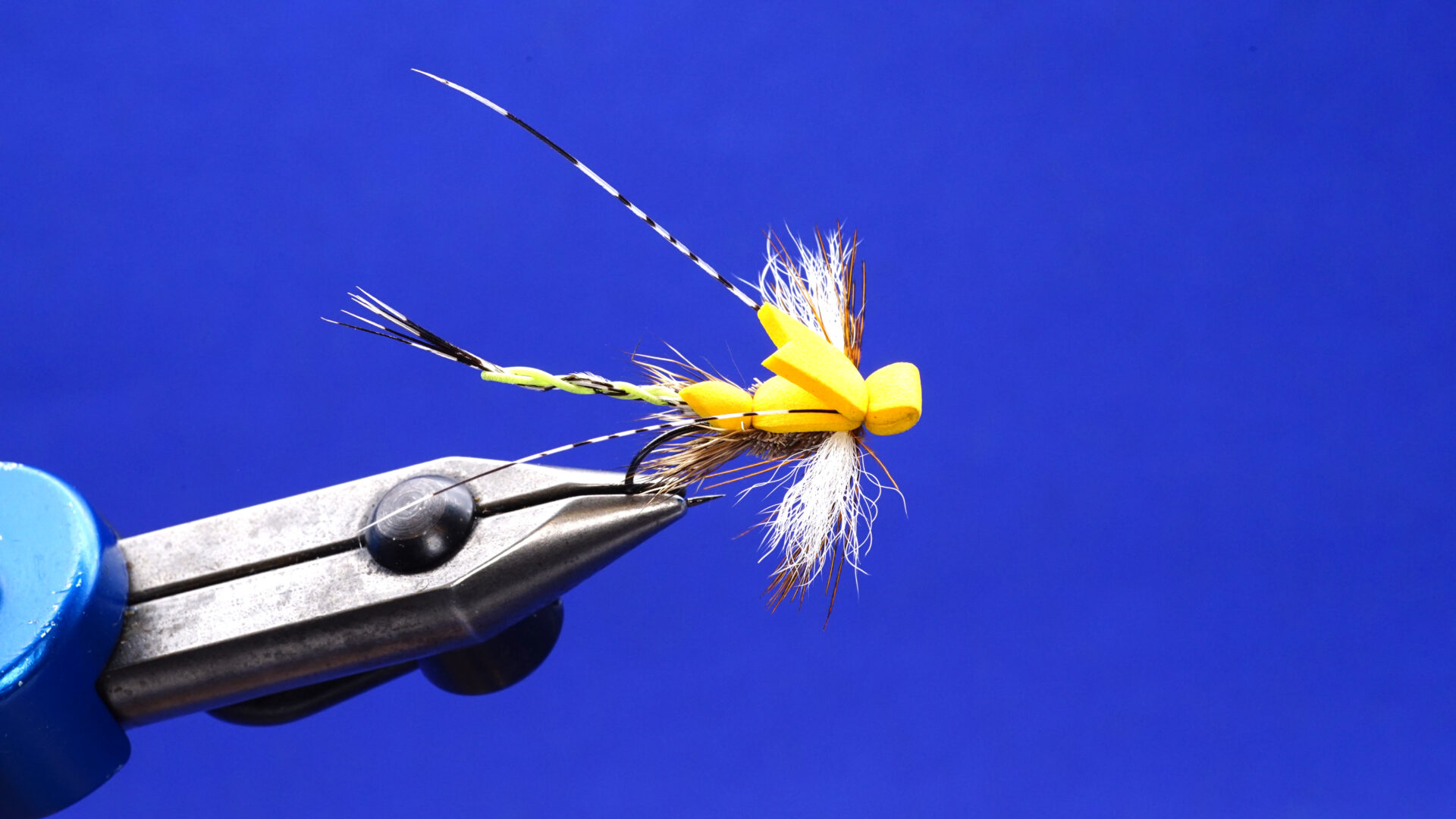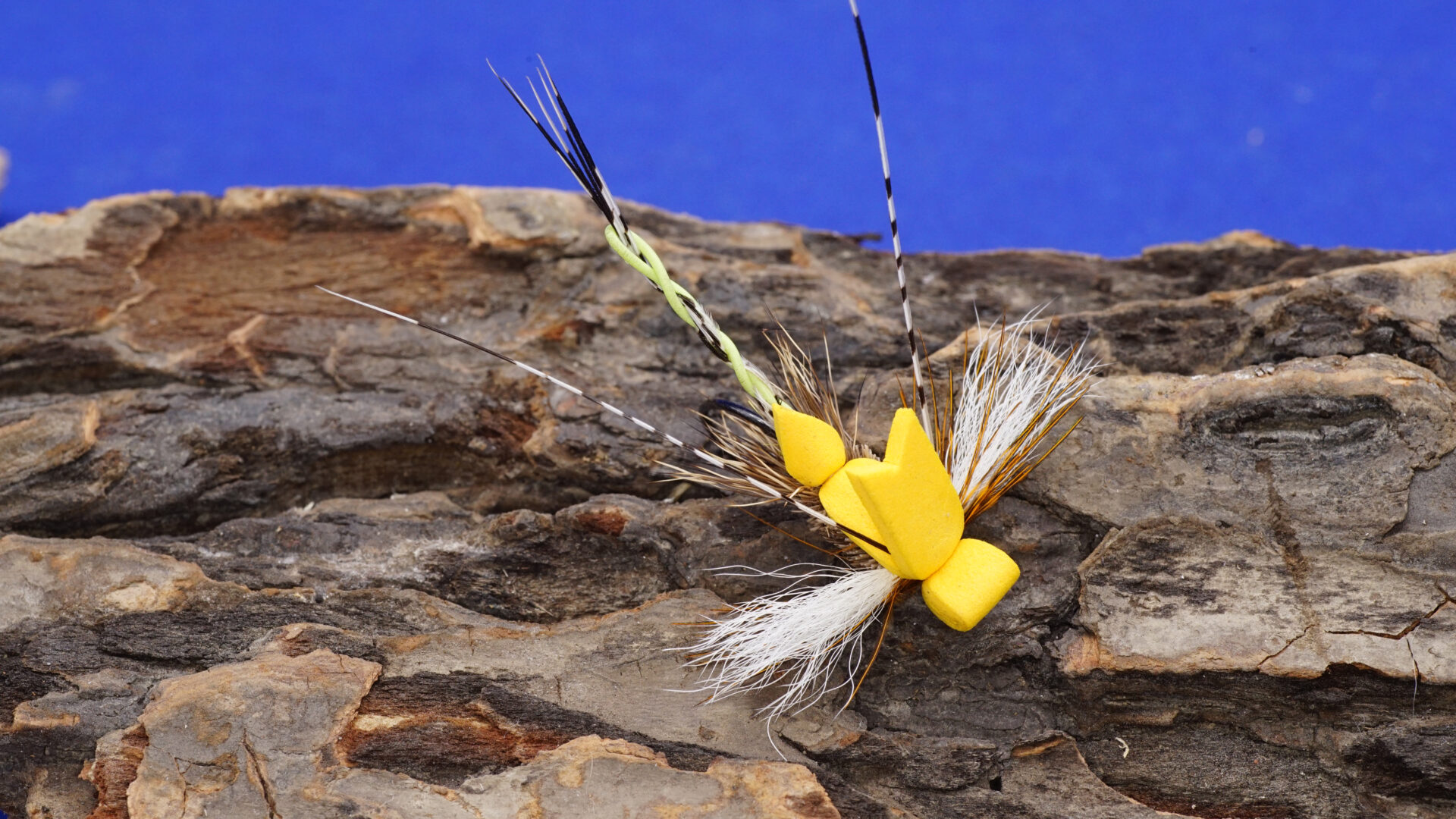Doug Wright has been fly fishing and tying flies since he was a kid. For the last 15 years, he has been a full-time steelhead guide based in northern BC, primarily on the fabled Dean River. He has amassed a wealth of skill, knowledge and experience chasing steelhead on the fly during this time. One of his favourite pursuits is taking steelhead on waking flies – flies designed to create a visible disturbance that suggests skating caddis, fluttering stonefly adults or appeal to a steelhead’s natural predatory nature.
Advertisement
Through his time on the water, Doug has witnessed steelhead rising to emerging insects. It seems the longer steelhead remains in the river, the more it returns to habits of its youth, sipping on hatching and egg-laying insects, a throwback to a time when dining on caddisflies, stoneflies and mayflies provided the necessary fuel for its eventual journey to the sea, where it would complete its maturation process feeding on the rich bounty the ocean has to offer. Doug recalled a specific example while prospecting a deep glassy pool one late afternoon, which soon boiled with steelhead rising to eat as many hatching green drakes as possible.
Advertisement
Based on his observations, Doug, using his origins as a trout fisher, began designing and experimenting with various surface flies that he could both wake and dead drift. Doug likes the look of scruffy flies and how they fish, and his Furled Skater is one such example. Doug was looking to create a small, slender fly that filled a late-season niche when fish seemed to shy away from larger, robust skaters, as water levels dropped and clarity increased. Early in the season, Doug’s skater also works by simply increasing the proportions.
Doug loves to re-use and re-purpose materials. Old floating fly line proved a perfect candidate for the distinct furled tail. Floating lines come in a variety of colours and sizes and just one 90-foot line can produce many flies.
Advertisement
You can furl a variety of materials, including wool and Antron yarn, to create extended bodies on various patterns, including damselfly adults, mayfly duns and spins, baitfish patterns and, of course, Doug’s Skater. To furl a material:
- Hold each end of the material in your thumb and forefingers;
- Spin the material tight by twisting in opposite directions with both hands;
- With the material twisted, push the ends towards each other and allow it to fold and twist back on itself.
- The end result is a neat, durable body ready for installation onto the hook.
To form the body on his Skater, Doug places a crease by folding and pinching a short section of floating line at its mid-point. He then takes six strands of Lady Amherst pheasant tail and pinches them with one end of the fly line, so the tips extend about half an inch past the crease. While still holding the line and pheasant tail together, he twists the opposite end of the fly line and pheasant tail tight, allowing it to furl back on itself, creating the extended body and tail. Once twisted tight, apply a dab of Aqua Seal or UV resin to the underside where the pheasant tail tips protrude out to stop them from slipping back when being fished. Doug admits it is a bit tricky at first to master the furling process, but with a bit of practice you can create furled extended bodies in short order.
The spent split-wing is another crucial pattern component. Doug advises not to make the wings too thick. When swung under tension, the sparse wings flutter, creating a wake steelhead find hard to resist.
Doug uses three presentation options when skating flies.
- Place a cast down and across the current. Keep the line under tension and allow it to swing and wake, slow and steady.
- Early in the season, try twitching or chugging the fly rather than skating. Mixing both twitching and skating on alternate swings is a great tactic. Make a cast and skate the fly. Take a step downstream, twitch and chug the fly on the next cast. Take a step. Skate the fly once again, continuing this process throughout the run.
- If you run into a situation where steelhead are rising to natural insects, use a standard dead drift dry fly presentation.
The Furled Skater offers a unique approach to skating steelhead flies. Once you have persevered and mastered the furling technique, you can use it like Doug to wake up many steelhead.
How To Tie The Furled Skater
Designed By Doug Wright
- Hook: Steelhead/salmon
- Thread: 6/0
- Tail/Body: Floating fly line furled with six strands of Lady Amherst pheasant tail
- Wing-Case: Two-millimetre closed cell foam, tan or yellow
- Thorax: Deer hair
- Wings: Kid goat hair or calf tail, divided and split
- Collar: Pheasant rump
- Antennae: Two strands of natural or Lady Amherst pheasant tail
Tying Instructions
- Take approximately four inches of floating line. Pinch and fold the fly line in half. Take six strands of Lady Amherst pheasant and position them, so tips are about an inch past the fold. Using the thumb and forefinger of one hand, hold one end of the fly line and pheasant tail strands together. Using your other thumb and forefinger, twist the other end of the fly line. Allow the twisted line to fold back and furl around the pheasant tail and other end of the fly line. Dab a bit of Aqua Seal or UV resin on the underside of the folded end where the pheasant tail tips protrude through, so they do not slip back out when fished.
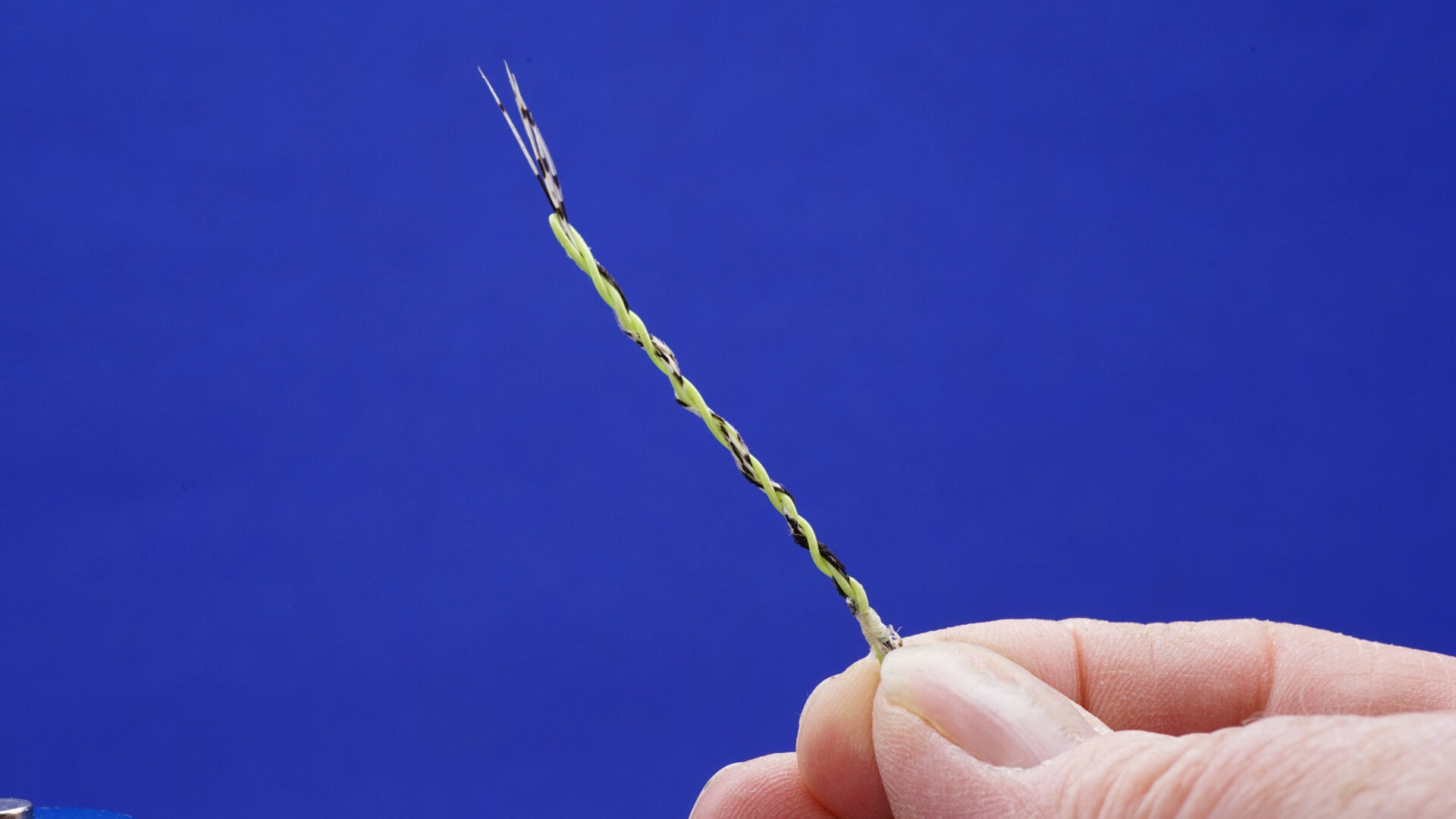
- Cover the hook shank with tying thread. Form a small dubbing ball at the rear of the shank. Tie the furled tail section onto the hook, so it extends back behind the hook about one half to three quarters of an inch.
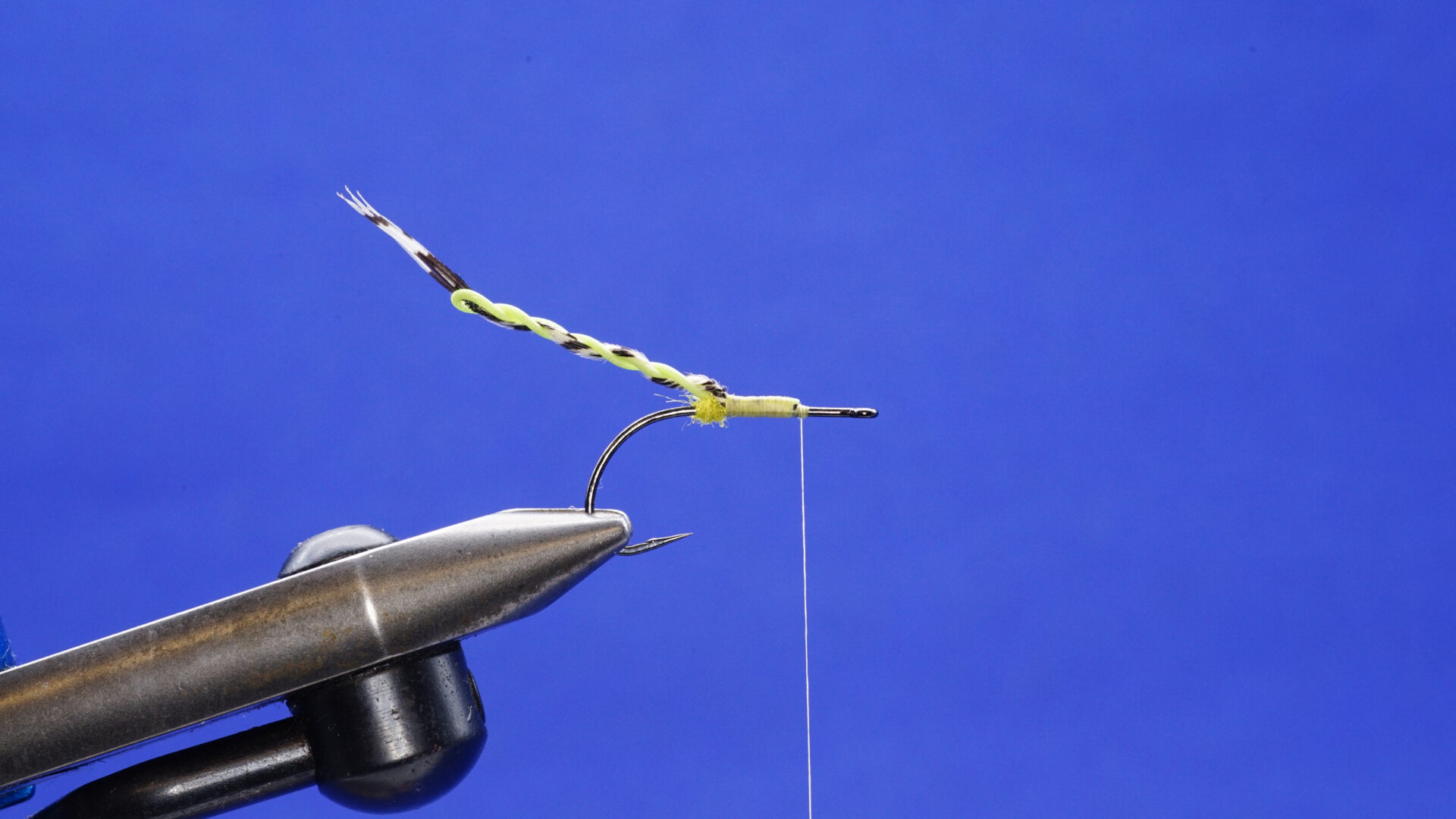
- Cut a closed-cell two-millimetre foam strip, about one-quarter-of-an-inch (six or seven millimetres) wide. Cut a V-shaped point into one end. Tie in at the rear, so the point extends back over the furled body. Fold the remaining foam back over the tail. Advance thread forward. To avoid crowding the head, tie in the stacked calf tail wing forward over the hook eye. Sweep the wing back and place a few wraps of thread in front of it to hold it in place. Split the wing into two equal clumps. Figure-eight the thread and post each wing to keep them in place in a spent position as you would for a mayfly spinner.
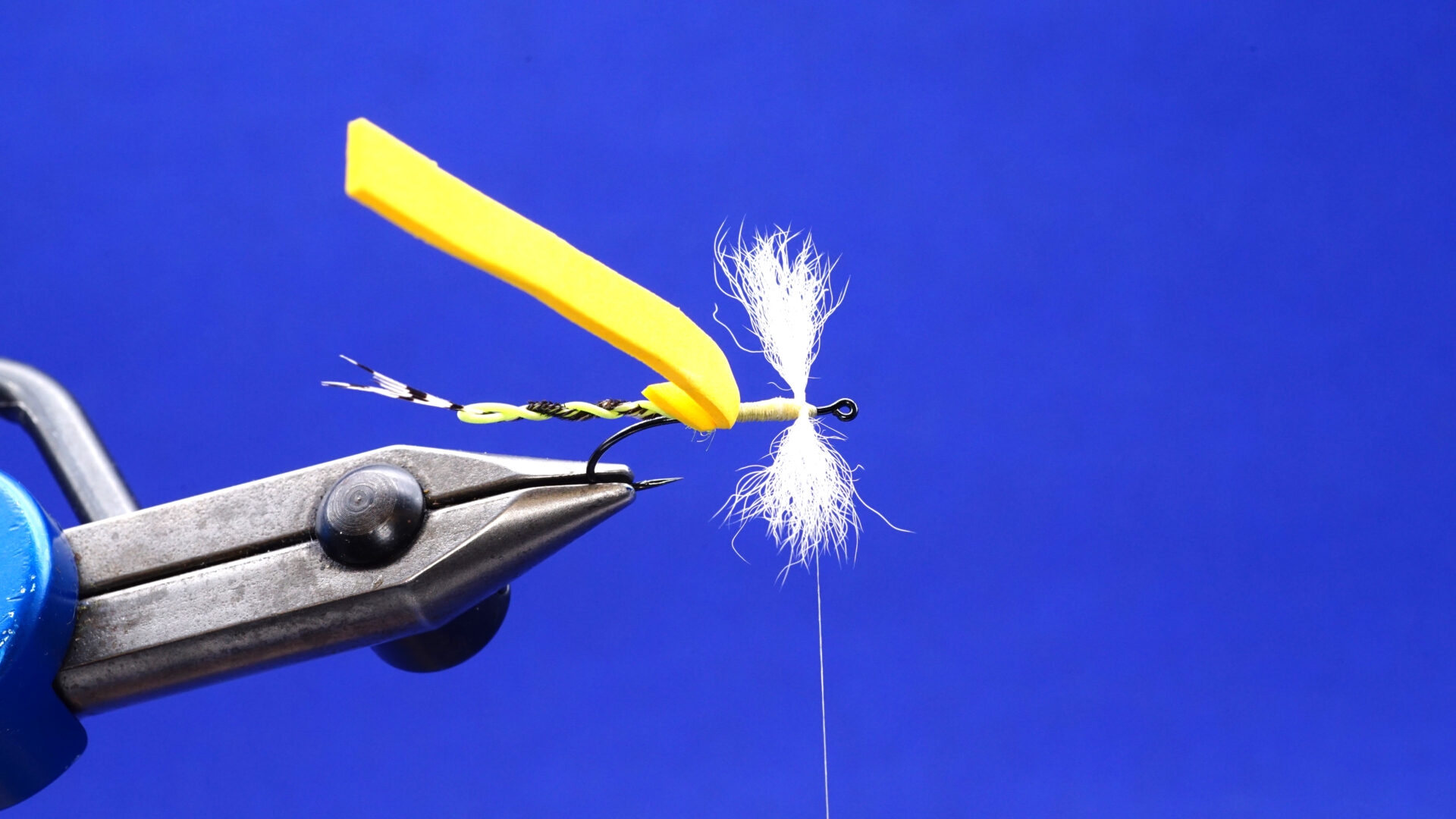
- Move the thread back to the foam wingcase. Prepare and stack a clump of deer body hair to even the tips. Lay the prepared deer hair clump against the shank, so the stacked tips extend back to approximately the bend of the hook. Place two loose but controlled wraps of thread around the deer. As you start the third wrap, apply pressure and release the hair so it spins around the hook. Continue with additional thread wraps until the hair ceases to spin and is locked in place. Continue to spin deer hair up the shank to the rear of the wings. Be sure to pack the deer after each stack to form a tightly packed, buoyant body. With the deer hair body spun and packed, trim it carefully, avoiding the wings, flat on the top and bottom. Trim the sides of the body so it matches the foam wing case in width. Tie in a pheasant rump feather by the tips in front of the wings. Wind it forward directly in front of the wings, tie off and trim the excess.
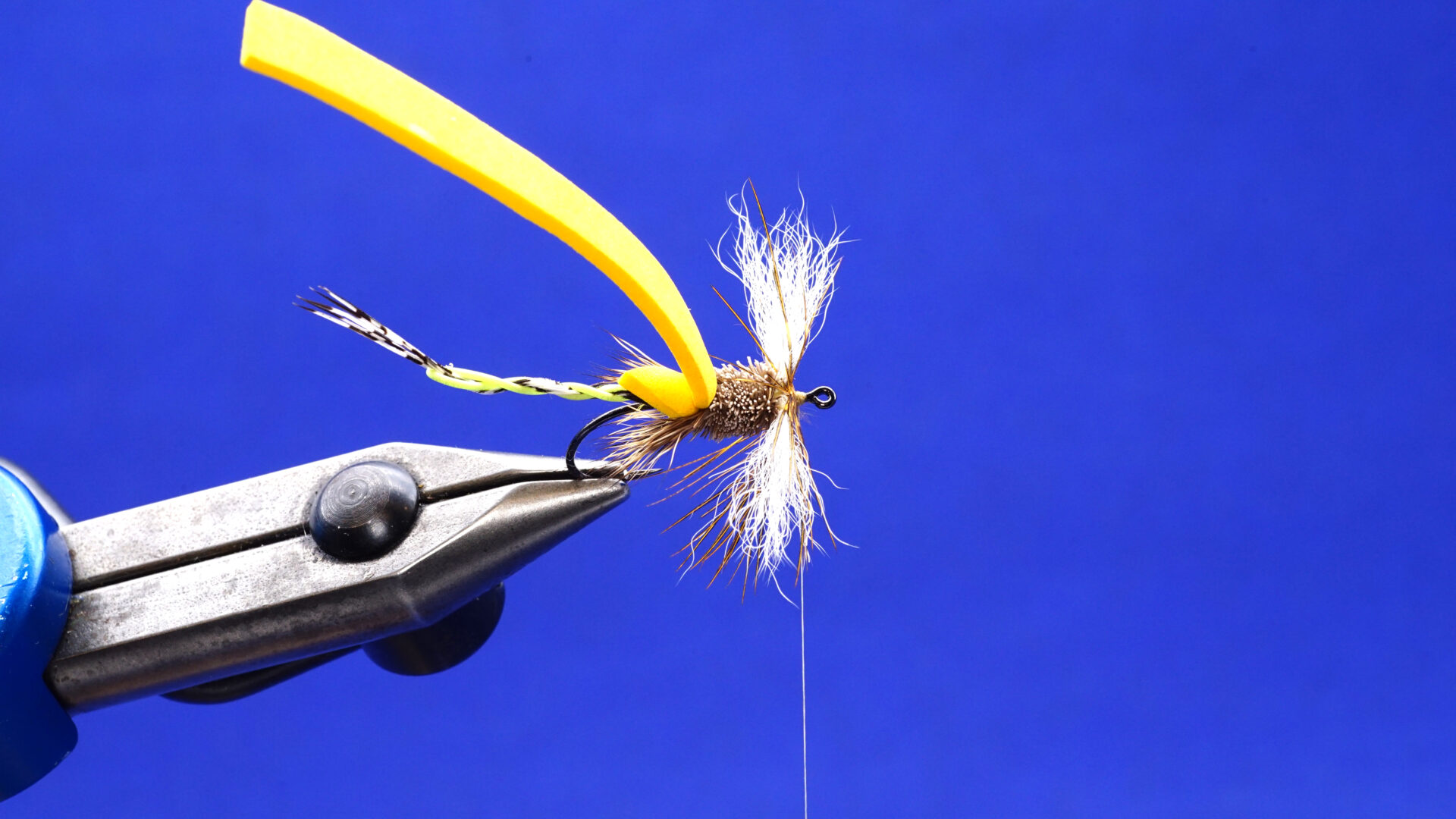
- Fold the foam over the body, wings and hackle. Tie the foam down securely to form the wing case. Do not remove the excess. Tie in two strands of pheasant tail for the antennae, so the tips extend back to the tips of the tail. Form the head by folding the foam strip back over itself and secure in position. Build a neat head under the folded foam at the hook eye, whip finish and apply cement. Trim the remaining foam even with the rear of the wingcase. Cut a V-notch into the foam to complete the fly.
